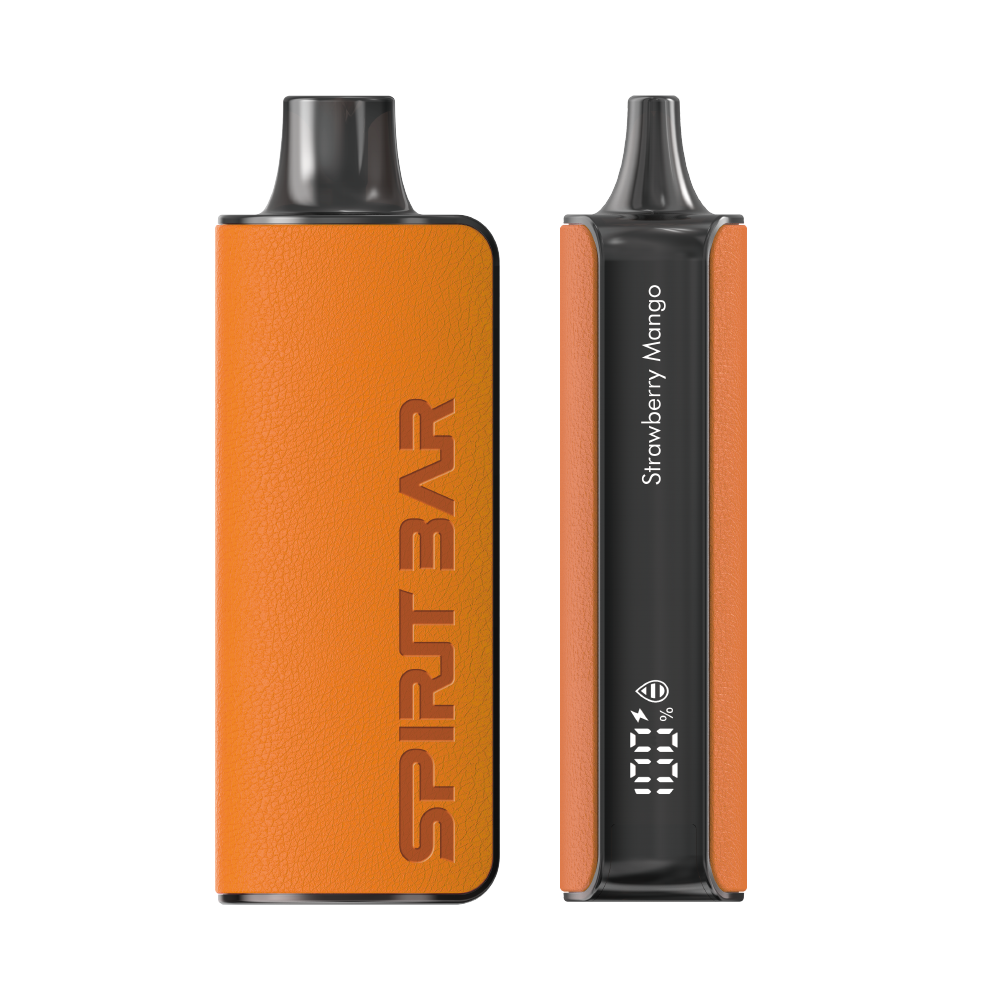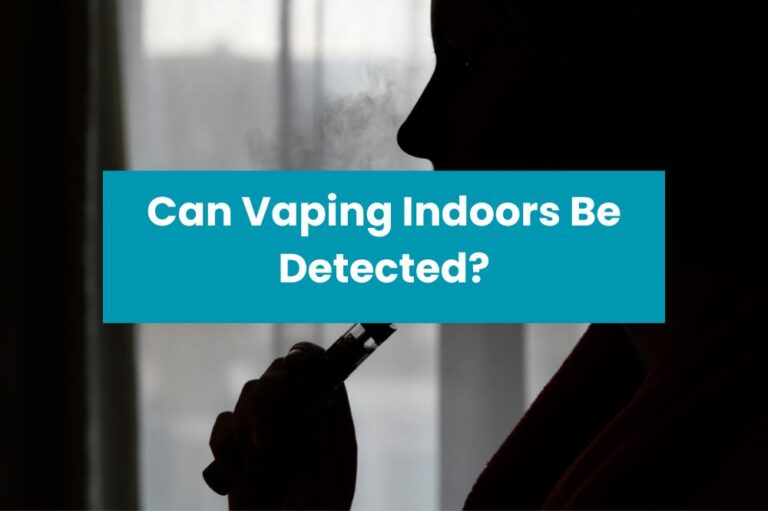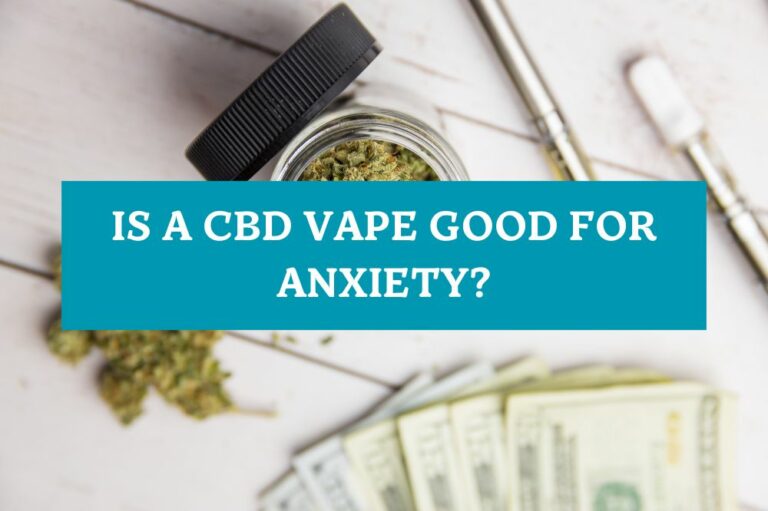Why Do Vapes Make Me Nauseous?

Do you ever feel nauseous after vaping? If so, you’re not alone. Many people experience this unpleasant sensation after using a vape, and it can be caused by a variety of factors. In this article, we’ll explore some of the reasons why vapes can make you feel sick and what you can do to prevent it.
One of the most common causes of nausea after vaping is nicotine. Nicotine is a stimulant that affects your nervous system, and too much of it can cause a variety of symptoms, including nausea, dizziness, and headaches. If you’re new to vaping or if you’ve recently increased your nicotine intake, you may be more susceptible to these side effects.
Another possible cause of nausea after vaping is the flavorings used in e-juice. Some people are more sensitive to certain flavors than others, and inhaling them can cause stomach upset. Additionally, some flavorings may contain chemicals that can irritate your throat and stomach, leading to nausea and other digestive issues. If you’re experiencing nausea after vaping, try switching to a different flavor or brand of e-juice to see if that helps.
Understanding Vapes
If you’re new to vaping, it can be overwhelming to navigate the different types of devices and e-liquids available. Essentially, vaping involves inhaling vapor from an electronic device that heats up a liquid, which usually contains nicotine, flavorings, and other chemicals.
One of the main reasons why vapes can make you nauseous is the high nicotine content in some e-liquids. Nicotine is a stimulant that can cause a range of effects, including increased heart rate, blood pressure, and decreased appetite. When you vape with high nicotine levels, you may experience symptoms such as nausea, dizziness, and headaches.
SPIRITBAR Katana BP10000
- Slender, leather-textured body reminiscent of a katana handle for an authentic samurai feel
- Unique samurai-inspired e-liquid flavor - fruity yet not too sweet, with a luxurious, elegant aroma
- Powerful 650mAh rechargeable battery for extended vaping time
- Large 18ml e-liquid capacity and 10,000 puff capacity
- Advanced mesh coil and e-liquid & power display screens for optimal vaping experience
The special juice captures the essence of the samurai spirit with its rich, smoothly pulsating flavor that brings new satisfaction with every puff. The device's slender, leather-textured design evokes the grip of a samurai's katana, making this product a perfect choice for beginner vapors.
Another factor that can contribute to feeling sick after vaping is the type of e-liquid you’re using. Some people may have sensitivities to certain ingredients, such as propylene glycol (PG) or vegetable glycerin (VG), which are commonly used as bases in e-liquids. If you have a sensitivity to PG, for example, you may experience throat irritation, coughing, or other symptoms.
It’s also important to note that some people may be more sensitive to the vapor itself, regardless of the specific e-liquid or device they’re using. Inhaling vapor can be harsh on the lungs, especially if you’re not used to it. Additionally, some people may be sensitive to the flavorings or other chemicals in e-liquids, which can cause allergic reactions or other symptoms.
Overall, if you’re experiencing nausea or other symptoms after vaping, it’s important to take a break and assess what could be causing the issue. Consider trying a different e-liquid with lower nicotine levels or different ingredients, or adjusting your vaping habits to see if that helps alleviate the symptoms.
Chemicals in Vapes
When you use a vape, you are inhaling a mixture of chemicals into your lungs. The exact composition of the chemicals in vapes can vary depending on the brand, flavor, and type of vape. However, most vapes contain the following chemicals:
- Nicotine: This is the addictive substance found in tobacco products. Nicotine is also present in many vapes, and it can cause nausea, dizziness, and other side effects.
- Propylene glycol: This is a common ingredient in vapes, and it is used to create the vapor that you inhale. Propylene glycol can cause throat irritation and other respiratory problems.
- Vegetable glycerin: This is another ingredient used to create the vapor in vapes. Vegetable glycerin is generally considered safe, but it can cause allergic reactions in some people.
- Flavorings: Vapes come in a wide variety of flavors, and these flavors are created using a mixture of chemicals. Some of these chemicals can be harmful when inhaled, and they can cause nausea, headache, and other side effects.
- Formaldehyde: This is a carcinogenic chemical that can be produced when the propylene glycol and vegetable glycerin in vapes are heated to high temperatures.
It is important to note that the long-term effects of inhaling these chemicals are not yet fully understood. However, studies have shown that vaping can cause respiratory problems, and it may increase the risk of developing lung cancer and other serious health conditions. If you experience nausea or other side effects while using a vape, it may be a sign that your body is reacting negatively to the chemicals in the vape.
SPIRITBAR Jack’s Flask 9000 Puffs
- Stylish pirate flask-shaped body providing an exciting vaping experience
- Delivering up to 9000 puffs per device
- 20ml e-liquid capacity with 50mg nicotine strength for satisfying throat hit
- Specialized pirate-themed e-juice flavors for rich, swirling taste
- Premium mesh coil optimizes flavor profile for maximum vaping enjoyment
This disposable vape captures the daring spirit of the high seas with its flask styling and signature pirate e-juice flavors. The extraordinary battery life provides 9000 indulgent puffs for extended vaping pleasure. Live boldly and freely with the Jack's Flask - a legendary vaping experience fit for a pirate's adventures.
Nicotine and Nausea
If you’re experiencing nausea after vaping, it’s likely due to the nicotine content in your e-liquid. Nicotine is a stimulant that can cause a number of effects on your body, including nausea. Here are two possible reasons why nicotine may be causing your nausea:
Nicotine Overdose
If you’re new to vaping, you may not be used to the amount of nicotine in e-liquids. Overdosing on nicotine can cause nausea, vomiting, and other symptoms. According to Cleveland Clinic, nicotine poisoning is more common in children due to their smaller size.
To avoid nicotine overdose, start with a lower nicotine concentration and gradually increase it until you find a comfortable level. It’s also important to follow the instructions on your e-liquid bottle and avoid using too much at once.
Nicotine Sensitivity
Another possible reason for your nausea is nicotine sensitivity. Some people are more sensitive to nicotine than others, and even a small amount can cause nausea. If you’re experiencing nausea after vaping, try switching to a lower nicotine concentration or a different e-liquid flavor.
In addition to nausea, nicotine sensitivity can cause other symptoms such as dizziness, headaches, and increased heart rate. If you’re experiencing these symptoms, it’s important to take a break from vaping and avoid nicotine until you feel better.
In conclusion, if you’re experiencing nausea after vaping, it’s likely due to the nicotine content in your e-liquid. To avoid nicotine overdose or sensitivity, start with a lower nicotine concentration and gradually increase it until you find a comfortable level. If you’re still experiencing symptoms, try switching to a different e-liquid flavor or consult with a healthcare professional.
Dehydration from Vaping
Vaping can cause dehydration, which can lead to nausea and other discomforts. When you vape, the vapor you inhale can dry out your mouth and throat, which can lead to a feeling of thirst. If you don’t drink enough water to counteract this, you can become dehydrated.
Dehydration can cause a range of symptoms, including nausea, dizziness, fatigue, and headaches. If you experience any of these symptoms while vaping, it’s important to take a break and drink some water. You should also consider reducing your vaping frequency or switching to a lower-nicotine e-liquid.
To prevent dehydration while vaping, it’s important to drink plenty of water throughout the day. You should also avoid vaping for extended periods of time without taking a break to hydrate. If you’re going to be vaping for a long period of time, it’s a good idea to keep a bottle of water handy so you can take regular sips.
SPIRITBAR Katana BP10000
- Slender, leather-textured body reminiscent of a katana handle for an authentic samurai feel
- Unique samurai-inspired e-liquid flavor - fruity yet not too sweet, with a luxurious, elegant aroma
- Powerful 650mAh rechargeable battery for extended vaping time
- Large 18ml e-liquid capacity and 10,000 puff capacity
- Advanced mesh coil and e-liquid & power display screens for optimal vaping experience
The special juice captures the essence of the samurai spirit with its rich, smoothly pulsating flavor that brings new satisfaction with every puff. The device's slender, leather-textured design evokes the grip of a samurai's katana, making this product a perfect choice for beginner vapors.
In addition to drinking water, you can also try using a hydrating mouthwash or spray to keep your mouth and throat moist while vaping. Some vapers also find that switching to a higher-VG e-liquid can help reduce dehydration, as VG is less drying than PG.
Remember, dehydration from vaping can be uncomfortable and even dangerous if left untreated. If you experience any symptoms of dehydration while vaping, take a break and drink some water. By staying hydrated, you can help prevent nausea and other discomforts while enjoying your favorite e-liquid flavors.
Vaping Technique
When it comes to vaping, the way you inhale can make a big difference in how you feel afterward. Here are a few tips to help you adjust your vaping technique and reduce the chances of feeling nauseous:
- Slow and steady inhales: Taking long, slow inhales can help reduce the amount of vapor you inhale at once, which can be overwhelming for some people. Try to inhale slowly and steadily, and take breaks between puffs if you need to.
- Mouth-to-lung inhales: If you’re used to taking deep lung hits, you might want to try switching to mouth-to-lung inhales instead. This involves taking the vapor into your mouth first, then inhaling it into your lungs. Mouth-to-lung inhales can be less harsh on your throat and lungs, which can help reduce nausea.
- Lower wattage and temperature: If you’re using a high-powered device, you might want to try lowering the wattage or temperature. This can help reduce the amount of vapor you inhale at once, which can be easier on your system.
- Choose the right e-liquid: Some e-liquids can be harsher than others, especially if they have high levels of nicotine or other additives. If you’re feeling nauseous after vaping, you might want to try switching to a different e-liquid with a lower nicotine content or fewer additives.
By adjusting your vaping technique and choosing the right e-liquid, you can reduce the chances of feeling nauseous after vaping. If you’re still experiencing nausea despite these changes, you may want to consider talking to a doctor or healthcare professional to rule out any underlying health issues.
Individual Health Factors
If you experience nausea when vaping, it could be due to individual health factors. Here are some factors that could be contributing to your nausea:
Existing Medical Conditions
If you have existing medical conditions, vaping could exacerbate your symptoms and cause nausea. For example, if you have a respiratory condition such as asthma or chronic obstructive pulmonary disease (COPD), inhaling the vapor from a vape could irritate your lungs and cause nausea. Additionally, if you have a gastrointestinal condition such as acid reflux or irritable bowel syndrome (IBS), the nicotine in vapes could exacerbate your symptoms and cause nausea.
Allergies to Vape Ingredients
If you have allergies to any of the ingredients in the vape juice, it could cause nausea. For example, if you are allergic to propylene glycol, which is a common ingredient in vape juice, you could experience nausea when vaping. Additionally, if you are allergic to any of the flavorings in the vape juice, it could cause nausea.
It’s important to note that some people may not be aware that they have an allergy to a particular ingredient in vape juice, so it’s important to pay attention to your body’s reaction when vaping. If you experience nausea or any other symptoms, stop vaping immediately and consult with a healthcare professional.
Overall, if you experience nausea when vaping, it could be due to individual health factors such as existing medical conditions or allergies to vape ingredients. It’s important to be aware of these factors and to consult with a healthcare professional if you experience any symptoms.
Vape Device Quality
The quality of your vape device can also affect how you feel after vaping. Cheap and poorly made devices may not regulate temperature and voltage properly, leading to inconsistent vaping experiences. This can cause you to inhale too much nicotine or other harmful substances, leading to nausea and other unpleasant side effects.
Investing in a high-quality vape device can help you avoid these issues. Look for devices that offer temperature control and adjustable wattage settings. These features can help you customize your vaping experience and avoid inhaling too much nicotine or other substances.
Additionally, make sure to clean your vape device regularly. Residue from previous vaping sessions can build up and affect the quality of your current session. Use a cotton swab or cloth to clean the mouthpiece and other parts of the device.
Finally, make sure to replace your coils and other parts as needed. Old and worn out coils can affect the quality of your vaping experience and lead to unpleasant side effects like nausea. Check your device manual or consult with a vape shop professional to determine when it’s time to replace these parts.
By investing in a high-quality vape device, cleaning it regularly, and replacing parts as needed, you can help ensure a consistent and enjoyable vaping experience without the unpleasant side effects of nausea and other symptoms.
Vaping Frequency
If you experience nausea when vaping, it could be due to the frequency of your vaping sessions. Vaping too often can cause nicotine overdose, which can lead to various symptoms, including nausea.
Nicotine is an addictive substance, and your body can quickly build up a tolerance to it. This means that you may need to vape more frequently or use a higher nicotine concentration to achieve the same effect. However, this can lead to nicotine overdose, which can cause nausea and other unpleasant symptoms.
To avoid nausea caused by vaping frequency, try to limit your vaping sessions to a reasonable frequency. You can also try reducing the nicotine concentration in your e-liquid or switching to a lower nicotine strength.
It’s important to note that vaping too infrequently can also cause nausea. This is because your body may not be used to the nicotine and other chemicals in the e-liquid, and it can cause a reaction.
In summary, finding the right vaping frequency is key to avoiding nausea and other unpleasant symptoms. Experiment with different nicotine strengths and vaping schedules to find what works best for you.








